The emergency room (ER) serves as a critical entry point to healthcare, particularly for acute and urgent medical needs that cannot wait for a routine appointment.
In 2021, over 139 million visits were recorded at emergency departments across the United States, underscoring the vital role of these facilities in addressing a range of health issues.
This article explores the top 10 conditions that led to ER visits, examining trends, demographics, and potential drivers behind these cases based on data from the National Hospital Ambulatory Medical Care Survey (NHAMCS).
Key Takeaways
Overview of ER Visits

In 2021, the U.S. recorded approximately 139.8 million ER visits, with a utilization rate of 42.7 visits per 100 people. ER use varied significantly by age, sex, and residence:
- Age: ER utilization was notably high among young children (103.2 visits per 100 people for infants under 1) and the elderly (65.5 per 100 people for those over 75).
- Sex: Females accounted for 54.1% of visits, with the highest visit rates among women aged 25–44.
- Residence and Region: Individuals in nursing homes had higher visit rates (220 per 100 people) than those in private residences. Geographically, ER visits were highest in the South, making up 38.2% of total visits.
These insights underline the vital role ERs play in providing healthcare across diverse populations and underscore the importance of rapid diagnostic capabilities in ERs.
1. Stomach and Abdominal Pain, Cramps, and Spasms
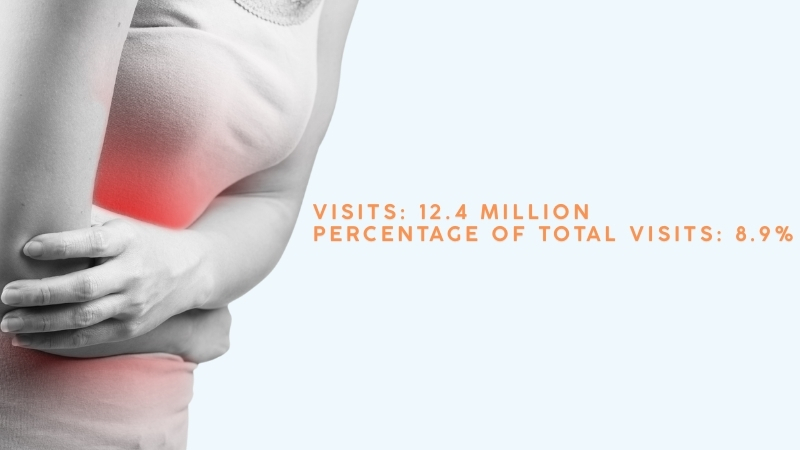
Abdominal pain was the leading cause of ER visits, representing 8.9% of cases. Causes range from relatively benign conditions like indigestion to serious issues such as appendicitis, gallstones, and kidney stones according to NCBI study.
For young children and the elderly, abdominal pain can often signal urgent conditions requiring immediate care, making ER visits essential for timely diagnosis and management.
As a common complaint across all age groups, abdominal pain often requires the resources of ER facilities, including imaging and lab tests, to rule out serious conditions.
2. Chest Pain and Related Symptoms
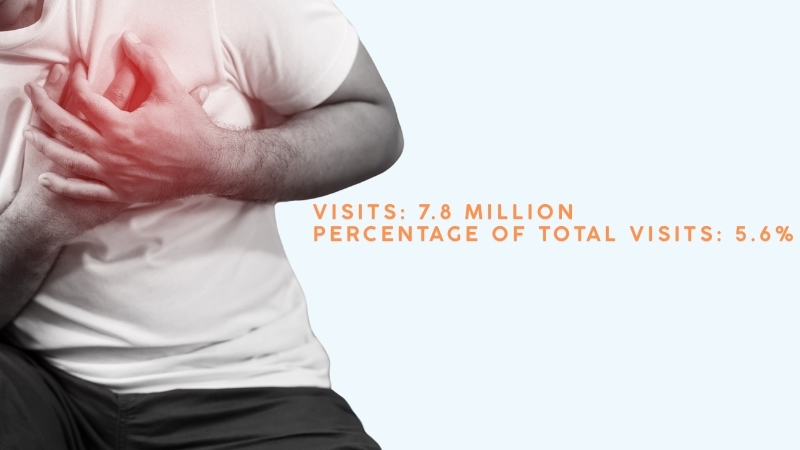
Chest pain accounts for 5.6% of ER visits, frequently associated with cardiovascular concerns like heart attacks or angina.
However, it may also stem from non-cardiac sources, including acid reflux or anxiety.
The seriousness of chest pain symptoms requires rapid intervention, as delays in diagnosis and treatment can be life-threatening as per some studies show.
This is especially relevant given the prevalence of cardiovascular disease in the U.S. The combination of high prevalence and the need for immediate diagnosis makes chest pain a critical driver of ER visits.
3. Shortness of Breath
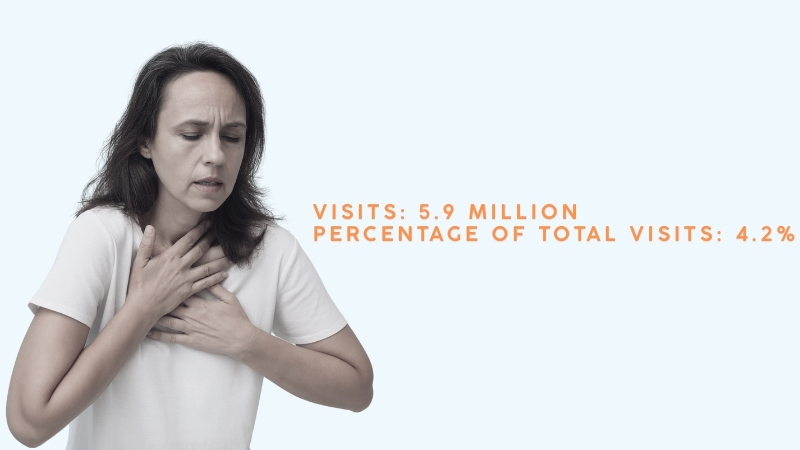
Shortness of breath, or dyspnea, accounted for 4.2% of ER visits and is a symptom associated with conditions ranging from asthma and chronic obstructive pulmonary disease (COPD) to pneumonia and heart failure.
This symptom, often life-threatening, disproportionately affects older adults and individuals with pre-existing respiratory issues.
During the COVID-19 pandemic, ER visits related to respiratory distress surged, highlighting the importance of ER departments as frontline providers of care for respiratory emergencies.
Urban settings add unique challenges to ER accessibility, as ambulance arrivals can sometimes be delayed due to traffic issues like double-parked cars that hinder rapid emergency response, click here to see how these traffic disruptions affect both ER accessibility and the speed of patient care, emphasizing the need for coordinated urban planning around emergency services.
4. Cough
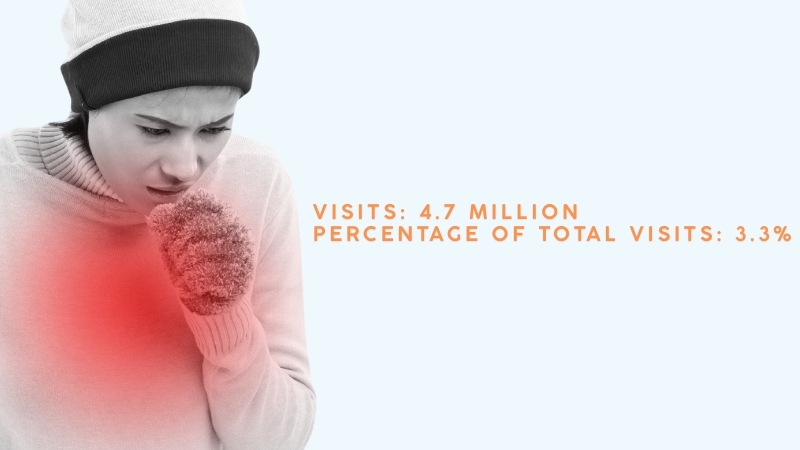
Cough is a frequent reason for ER visits, representing 3.3% of cases, often signaling respiratory infections, bronchitis, or exacerbations of chronic conditions like asthma and COPD.
What’s in a COPD Cough? via @everydayhealth http://t.co/ZQSqtBsO4x
— COPD Foundation (@COPDFoundation) March 28, 2014
This symptom is especially prevalent in winter months when influenza and other respiratory infections are common.
Though mild in many cases, coughs that persist or are accompanied by other symptoms like fever and shortness of breath may indicate serious infections, justifying the need for immediate medical attention.
5. Fever
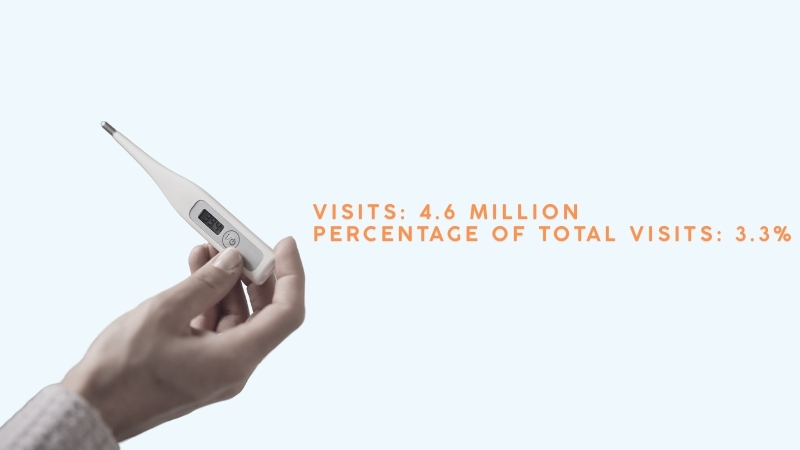
Fever is another major reason for ER visits, particularly in vulnerable populations like young children and the elderly, who may be at higher risk for severe infections.
CDC notes that fever can be an early indicator of various conditions, including bacterial infections, viral illnesses like influenza, and, recently, COVID-19.
Parents are often inclined to seek immediate care for children with high or prolonged fevers due to potential complications, highlighting the ER’s role in managing pediatric emergencies. In the ER, patients with fever undergo diagnostic tests to determine the underlying cause and provide necessary treatment.
6. Headache or Pain in the Head
Headaches led to 2.8% of ER visits, reflecting concerns over sudden, severe, or persistent head pain that might indicate conditions such as migraines, tension headaches, or, in severe cases, neurological issues like aneurysms or meningitis.
The unpredictable nature of headache symptoms, often accompanied by other worrisome signs, drives patients to the ER. Migraine sufferers, in particular, may seek care for pain relief when over-the-counter treatments fail.
7. Pain Not Referable to a Specific Body System
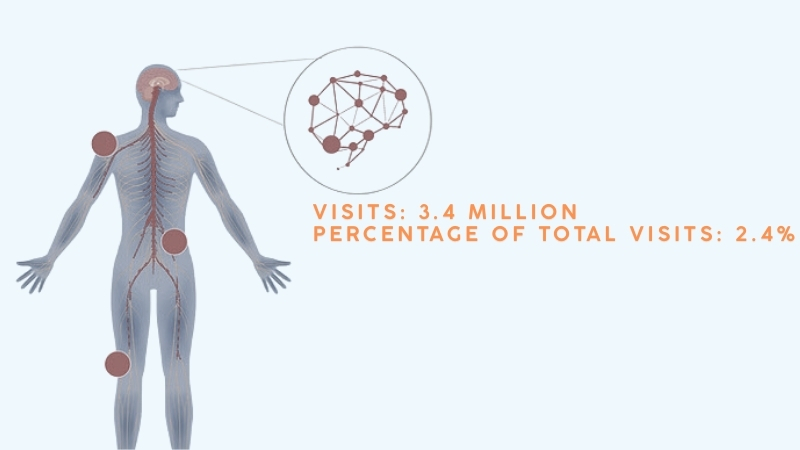
Generalized pain not localized to a specific body system is a significant driver of ER visits, representing 2.4% of cases.
This category includes diffuse discomfort and body aches often related to musculoskeletal issues, viral infections, or systemic conditions like fibromyalgia.
The complexity of non-specific pain can make diagnosis challenging, as it may involve multiple tests to rule out potential causes.
Given the broad nature of this complaint, ER physicians must consider a range of factors to provide effective relief and rule out serious underlying conditions.
8. Back Symptoms
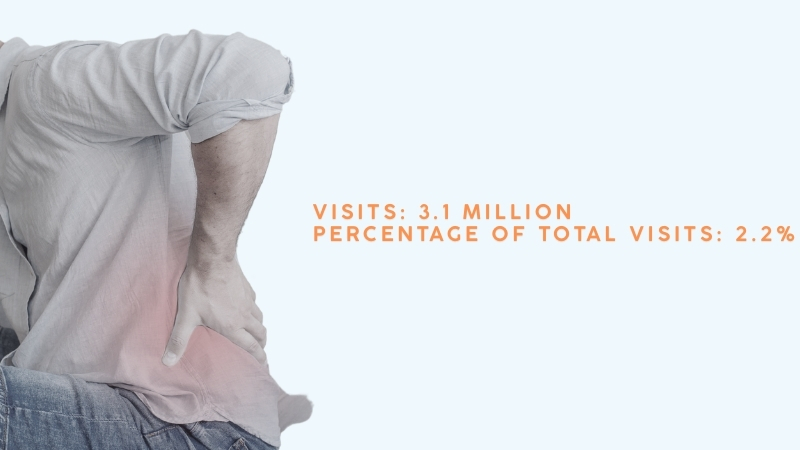
Back pain is a common reason for ER visits, affecting individuals across all demographics but particularly prevalent in middle-aged and older adults.
Causes range from minor muscle strains to more serious spinal conditions like herniated discs or spinal stenosis.
Since back pain can impact mobility and quality of life, many individuals seek ER treatment for immediate pain relief.
Additionally, the sudden onset of severe back pain can indicate emergencies like kidney stones or aneurysms, prompting patients to seek urgent care.
9. Vomiting
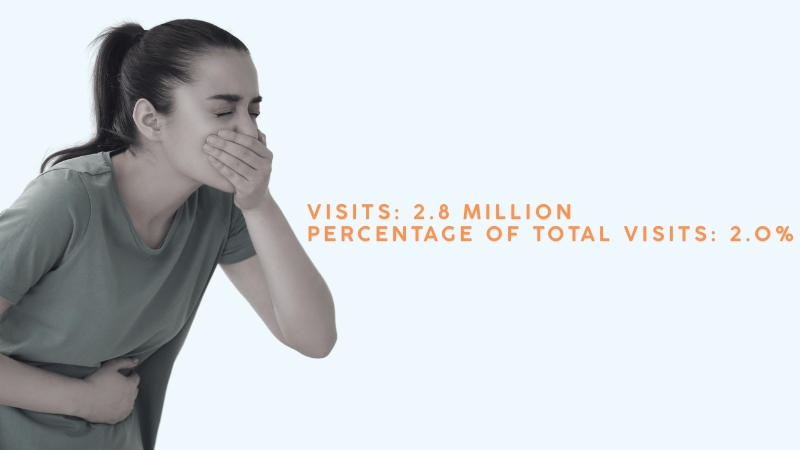
Vomiting is a frequent symptom prompting ER visits, commonly resulting from gastrointestinal infections, food poisoning, or more severe conditions like appendicitis. Thangam Venkatesan
Dehydration, a common complication of vomiting, can be dangerous, particularly for young children and older adults.
ER staff are equipped to rehydrate patients and conduct diagnostic testing to determine the underlying cause.
Given the potential for rapid dehydration and other complications, vomiting remains a common reason for ER visits.
10. Psychological and Mental Health Issues
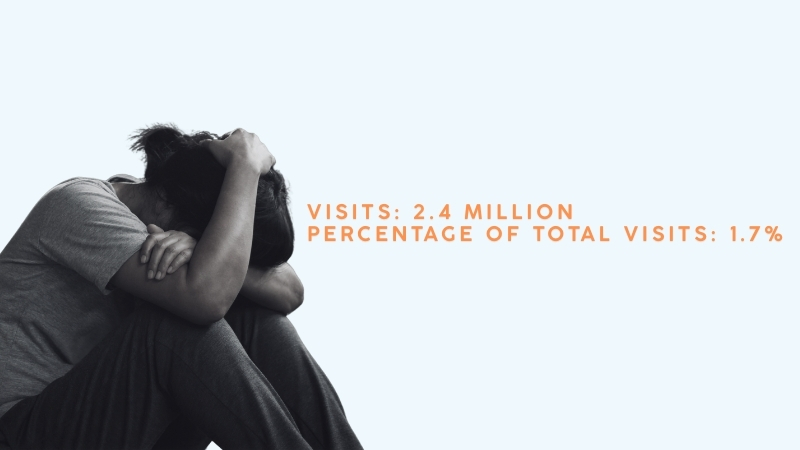
Mental health concerns, including anxiety, depression, and other psychological symptoms, are increasingly common reasons for ER visits.
The ER often serves as the primary access point for those experiencing mental health crises, especially in cases where other services are inaccessible.
Gregory Luke Larkin says that the impact of COVID-19 on mental health has likely contributed to an increase in these visits, reflecting growing public awareness and the importance of mental health support in ER settings.
Patient Demographics and Geographic Variations in ER Visits
According to NHAMCS data, ER visit rates vary across different demographic groups:
- Age and Sex: Infants (under 1 year) and the elderly (over 75 years) have the highest ER utilization rates, with 103.2 and 65.5 visits per 100 people, respectively. Women tend to visit the ER more frequently than men, particularly in the 25-44 age group.
- Residence: Individuals residing in nursing homes or other care facilities visit ERs more frequently than those in private residences, reflecting the healthcare needs of populations with complex medical histories.
- Geographic Regions: The South had the highest number of ER visits, while the West had the lowest. This regional variation may reflect factors like population density, availability of healthcare resources, and socioeconomic conditions.
References
- Similarities and Differences between Flu and COVID-19 CDC
- National Hospital Ambulatory Medical Care Survey: 2021 Emergency Department Summary Tables
-
Hickam DH. Chest Pain or Discomfort. In: Walker HK, Hall WD, Hurst JW, editors. Clinical Methods: The History, Physical, and Laboratory Examinations. 3rd edition. Boston: Butterworths; 1990. Chapter 9.
-
Larkin GL, Beautrais AL, Spirito A, Kirrane BM, Lippmann MJ, Milzman DP. Mental health and emergency medicine: a research agenda. Acad Emerg Med. 2009 Nov;16(11):1110-9. doi: 10.1111/j.1553-2712.2009.00545.x. PMID: 20053230; PMCID: PMC3679662.
- Venkatesan T, Tarbell S, Adams K, McKanry J, Barribeau T, Beckmann K, Hogan WJ, Kumar N, Li BU. A survey of emergency department use in patients with cyclic vomiting syndrome. BMC Emerg Med. 2010 Feb 24;10:4. doi: 10.1186/1471-227X-10-4. PMID: 20181253; PMCID: PMC2841069.
-
Sherman R. Abdominal Pain. In: Walker HK, Hall WD, Hurst JW, editors. Clinical Methods: The History, Physical, and Laboratory Examinations. 3rd edition. Boston: Butterworths; 1990. Chapter 86.
Related Posts:
- Utah Ranks in Top 5 Growth States as US Population…
- Top 11 U.S. Cities to Visit in 2025 According to…
- Top 5 States With the Highest Demand for Registered…
- Top 5 US Cities with the Best Public Transportation in 2025
- Top 10 Healthcare Careers in Demand for 2025 -…
- Top 13 Techniques for Improving Heart Rate Variability









